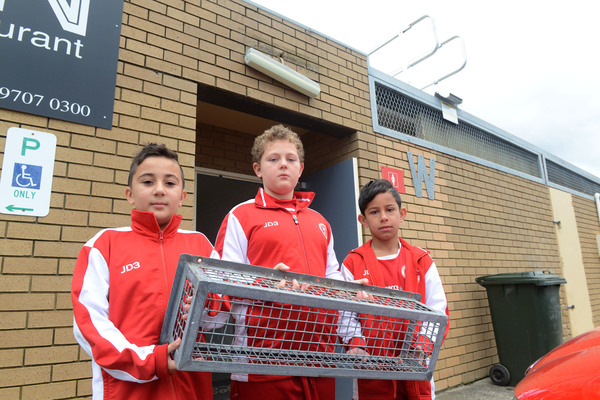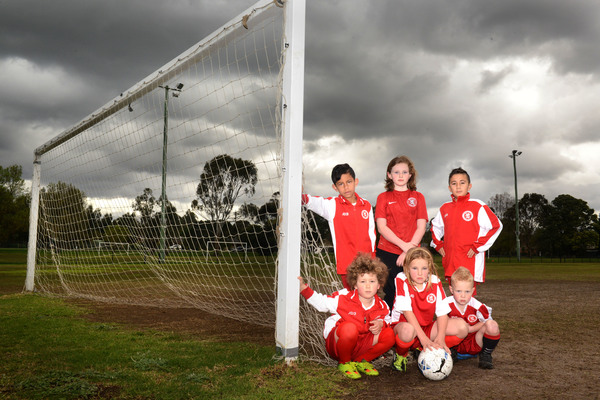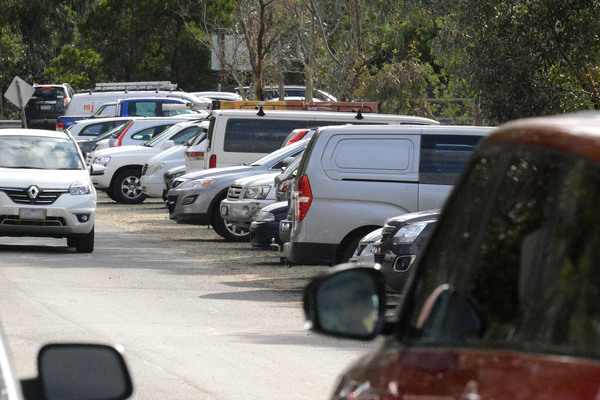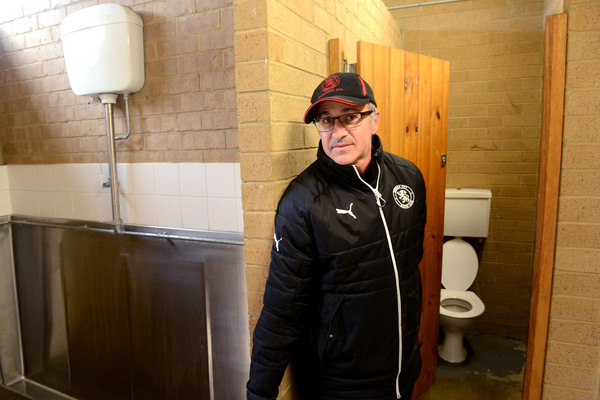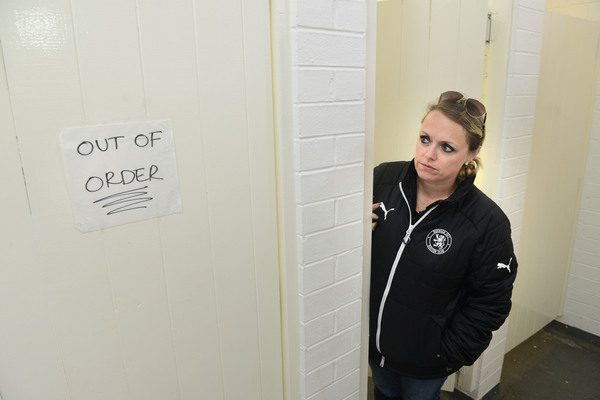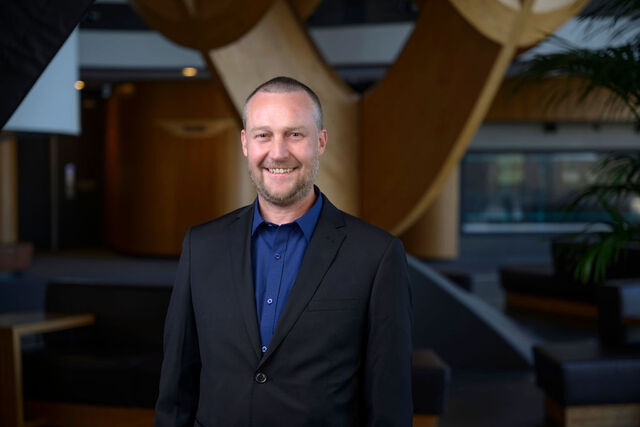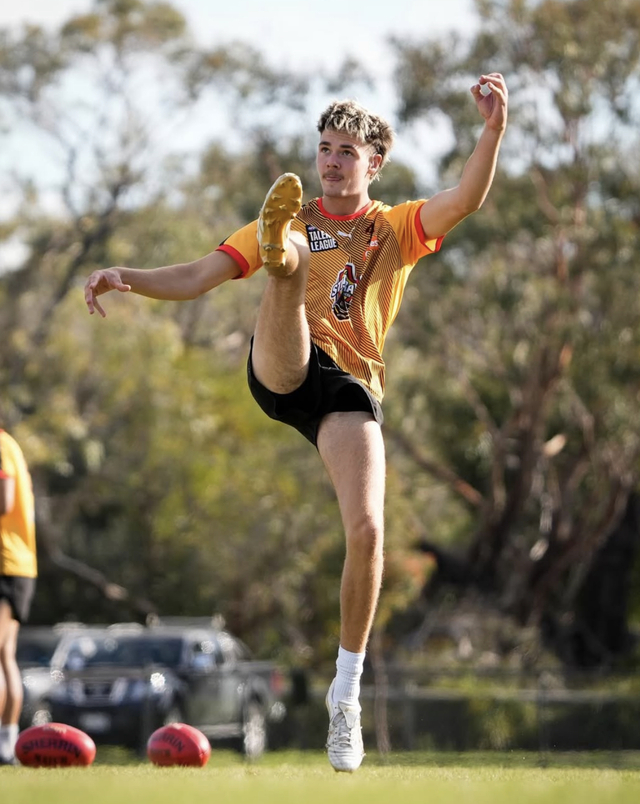By Cam Lucadou-Wells
Offside players pitch for improved grounds…
CASEY’S largest soccer club is crying foul over a lack of council action to upgrade dated and cramped
clubrooms, toilets, showers and flooding pitches at its Narre Warren North home.
Berwick City Soccer Club, with 750 registered players, has knocked back about 100 juniors this year due to its “pretty awful” circa 1980s facilities, says president Joe Di Iorio.
“It’s got to the stage that our members are just fed up.”
The club’s Jack Thomas Reserve headquarters in Fox Road, Narre Warren North, is often teeming with hundreds of players and spectators, despite a litany of faults left unfixed by the council.
One of them is the shortage of public toilets – three cubicles for females, one cubicle and a urinal for males.
On Saturdays, many spectators battle for a lack of designated sealed parking spaces.
Invariably, in wet conditions, some cars require a tow out of the spongy grassed areas.
After heavy rain, games on two junior pitches are often cancelled because their unplayable goalmouths are under water due to a lack of drainage.
Training has been shifted several times to synthetic pitches in Dandenong South as a result.
Recently an exterior steel light cover fell from above a clubroom door.
Had it hit someone they would probably have been seriously injured, Mr Di Iorio said.
The unheated clubrooms are divided by a temporary screen for home and away teams.
There is no facility for separate change rooms for its multiple women’s and men’s teams, he said.
In response to years of lobbying from the club, Casey council listed the pavilion on its 2014-’15 capital works program, but the works have since “disappeared” from the list, he said.
“I’m scratching my head. Now the council are saying we need to create a new club to take the strain off Berwick.”
The council recently installed a $45,000 playground that the club didn’t want, Mr Di Iorio said.
In winter, it is often marooned by surrounding puddles and dangerously sited in the firing line behind one of the senior pitch goals.
The council has also provided $27,180 for pitch floodlighting and $23,800 for cyclone fencing behind goals in the past two years.
Mr Di Iorio said Casey council had told him that the club – the fifth largest in the state and which is partnered by English Premier League powerhouse Arsenal – was too big for the site.
The council advised the club to guide potential players towards other Casey clubs, Mr Di Iorio said.
“Some of them end up coming back to us because we’re such a stable, well-run club.
“We’re a very inclusive and multicultural club. All our teams are in the highest possible state leagues.
“There’s a lot of immigrants coming to Casey, and their choice of sport is probably soccer.”
Mr Di Iorio said that the club could grow to 1000 players if it had adequate facilities.
In February, Cr Rafal Kaplon, as chairperson of Casey Association Football (Soccer) Reference Advisory Committee, was opposed to developing the Fox Road facility.
He instead advocated for new sites in Casey’s north such as by extending Syd Pargeter Reserve into Police Paddocks, Endeavour Hills or developing grounds at schools.
After recently visiting the site, Cr Kaplon has had a “change of position”.
As part of his re-election campaign in October, he said he is committed to upgrading the change rooms, improving drainage on one of the pitches and upgrading one pitch to synthetic coverage.
“These upgrades can be delivered at a lower cost than developing new facilities from scratch which fits with the current rate-capping environment.
“Furthermore it would deliver efficiencies by enabling greater use of existing sites by improving the state of pitches and deliver an additional 40 hours of pitch use if one of the pitches is upgraded to synthetic.”
Casey sport and leisure acting manager Terry Jenvey said the Jack Thomas Reserve – as well as the club’s access to Sweeney Reserve – met the “functional needs of the club’s members”.
“Council works with the club to maintain its grounds to the highest standard, in line with best practice, to ensure the venue can cope with demand while remaining one of the premier soccer facilities in the city.”
Mr Jenvey said there had been no detailed scope of works and associated cost estimate for upgrading Jack Thomas Reserve.
Under the council’s 20-year sports blueprint, projects were prioritised based on “current and future city-wide needs”, he said.
Since 2014-’15, the council has committed about $8.5 million in funding for AFL, cricket and netball facilities and $3.65 million for soccer.
The council’s most recent proposed project is a $6.67 million soccer and cricket facility in the Cranbourne West growth corridor, due to open in winter 2018.


